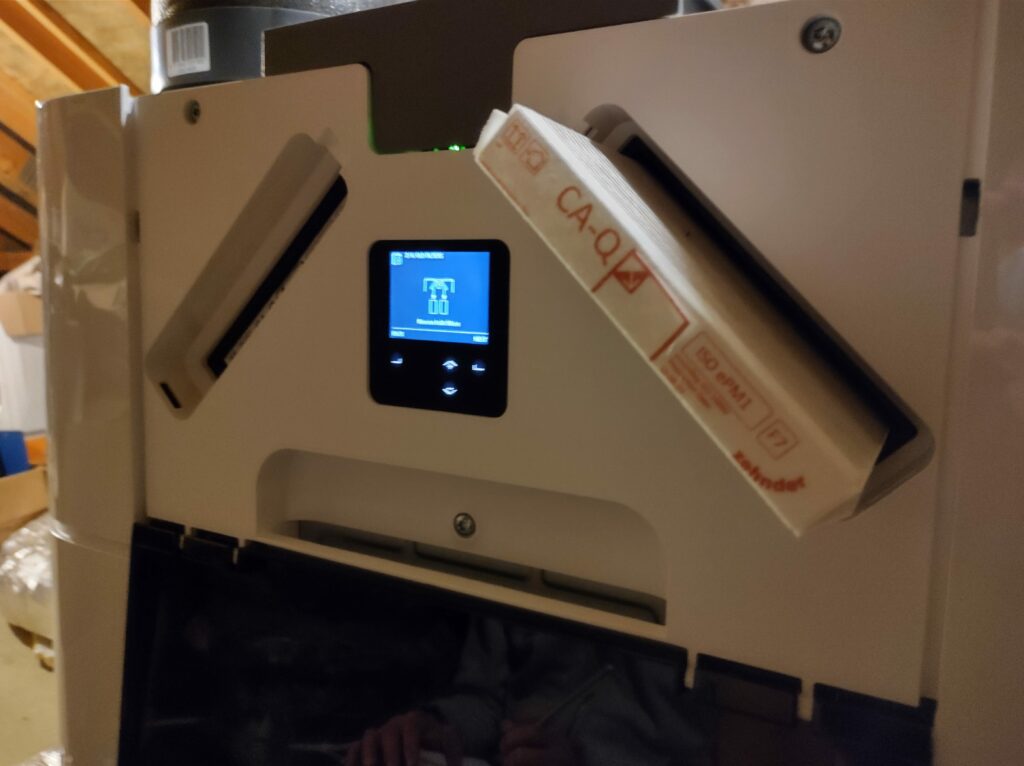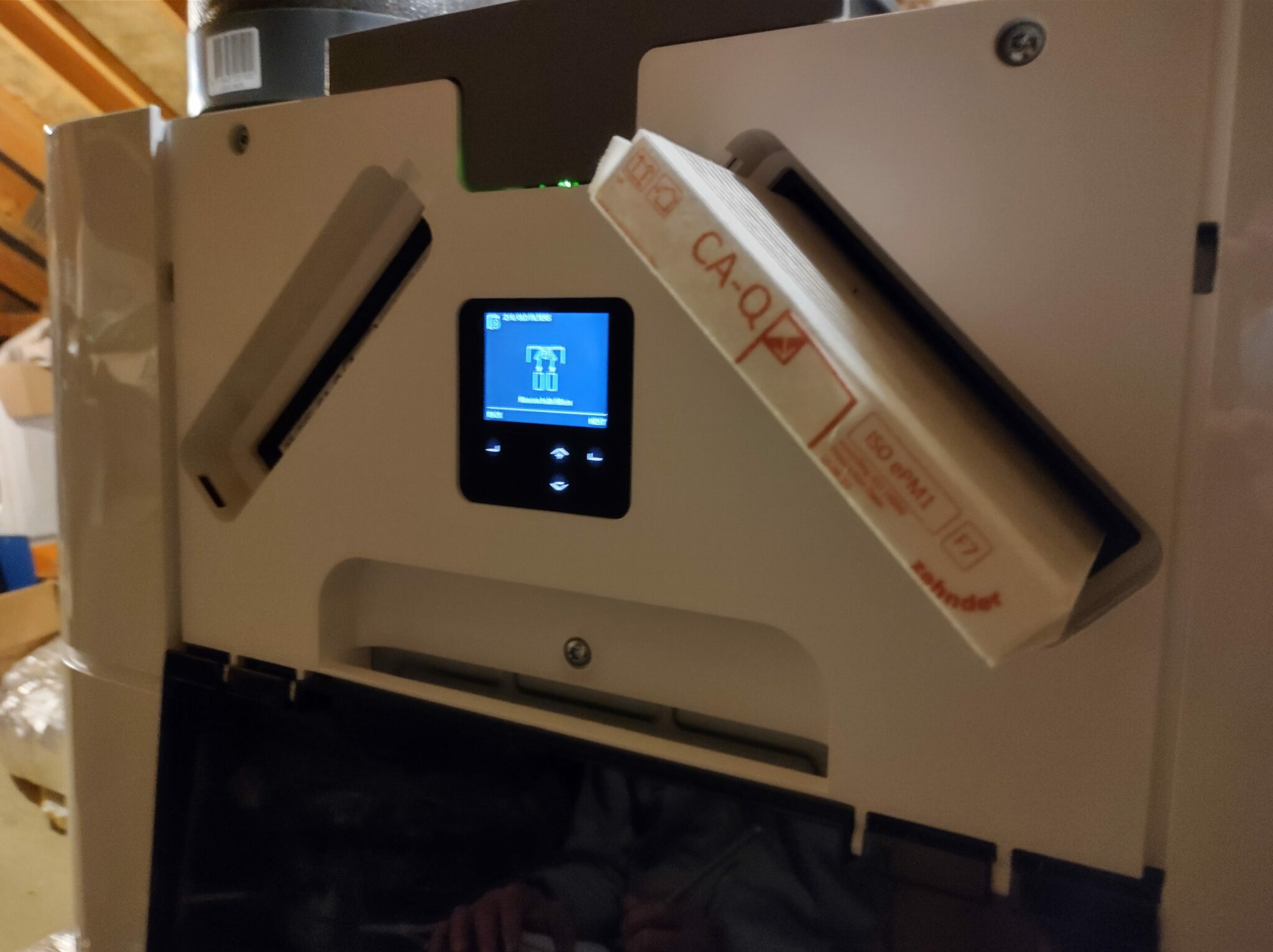When we consider examples of good hygiene in our home, we may think of easy-to-clean materials, strong disinfectants and mops and buckets.
But as Covid-19 is proving, hygiene in the home also relates significantly to the air we breathe indoors, and the bacterial and viral particles suspended within the air around us.
There are many ways to ventilate a home, but most fall short of providing hygienic ventilation all year round. This article will explain what Hygiene Ventilation is, what types of ventilation systems fail to provide it, and what the World Health Organization (WHO) recommends as the healthiest way to ventilate your home against airborne viruses.
What is Hygiene Ventilation?
Ventilation in the home is the process of removing stale waste air and replacing it with fresh (ideally filtered) air from outside. Good levels of ventilation help to dilute pollutants in the home such as excessively high humidity levels, CO2, dust, chemicals and virus particles. Poorly ventilated homes cause a build-up of these pollutants indoors which causes high condensation, black mould, respiratory issues and other general health problems.
Hygiene Ventilation is a way to ventilate a home to provide for both adequate air quality for all occupants and the dilution of indoor pollutants whilst also remaining comfortable, energy efficient and simple to use.
The WHO has stated in its practical manual for designing buildings to treat Corona Virus patients that “Air Dilution should always be the favoured solution” for ventilation. In short, that means increasing supply and extract rates for mechanical ventilation systems, and opening windows as much as possible.

Do most homes have Hygiene Ventilation Systems?
No, most homes in the UK (even most New Builds) are ventilated by a combination of cracks and gaps in the building fabric, trickle vents in the windows and extractor fans. These systems are unreliable, and often fall far short of the 30m3/hr air exchange that each person requires to be healthy indoors. This is because trickle vents are often closed to keep out cold air in winter, and extractor fans are often unreliable or too infrequently used. If an extractor fan is designed in a typical home to provide ventilation for all occupants all day long, why does it only turn on when the bathroom light is switched on?
Because an extractor fan is only there to protect the building fabric from moisture, not provide occupants with good indoor air quality.
Opening windows to let the wind blow through is the simplest way to raise ventilation levels and dilute indoor pollutants such as viruses quickly and easily, but it’s not comfortable or energy efficient in winter. The newspaper El Pais showed how increasing ventilation works to dilute the risk of catching Covid-19 by providing indoor scenarios.
Thy found that if six people sit together in a poorly-ventilated room for four hours with one infected person, after four hours they will all be infected.
If they all wear masks, after four hours five will still be infected.
But if the room is well-ventilated, after four hours only one person will have been infected.
Is Air-Conditioning healthy ventilation?
Air-Conditioning (AC) is often considered a form of ventilation, but an air heating or cooling system doesn’t actually remove stale air nor replace it with fresh air, so it can’t be considered ventilation at all. Instead, an AC unit runs the indoor air over and over again through a heating or chilling unit, cooling it or heating it and often stripping it of moisture.
Although it’s unclear whether viruses can survive within ducts or air-conditioning units, by failing to dilute the air these high-powered air-handling machines allow indoor pollutants to build up and potentially suspend virus particles in the air for longer, according to REHVA (Federation of European Heating, Ventilation and Air Conditioning Associations).
This problem with Air Conditioning is compounded in commercial buildings such as offices, hotels, supermarkets and even hospitals, where, as part of a combined heating and ventilation strategy, huge air-handling units recirculate enormous quantities of air through a heating or cooling system over and over again to maintain a certain indoor air temperature.
Glass skyscrapers are particularly guilty of this combined ventilation and heating strategy, often sacrificing even sensible energy efficiency for aesthetics and sleek forms across the city skyline.
Many modern commercial buildings don’t even have openable windows, because this would imbalance the fragile heating/cooling AC systems and stop them working properly. These buildings rely solely on ventilation systems that are often poorly serviced, dirty or barely understood. Sick Building Syndrome is a real problem that nearly all of us will have experienced at least once in our lives.
The problem with commercial air-handling systems is so serious that REHVA has recently stated that to prevent increasing the risk of spreading the SARS-CoV-2 virus that all parts of ventilation systems that recirculate air should be switched off immediately.
It also stated that local room-based fan coil units should be switched off to prevent “resuspension of virus particles at room level”, HVAC systems should be converted to supply as much fresh air to the building as possible, and windows should be opened as much as possible – all in line with the WHO’s guidance.
What is a good example of a residential healthy ventilation system?
An MVHR system is a perfect example of residential Hygiene Ventilation, as it fulfils all of the requirements for healthy and safe indoor air quality:
- An MVHR system guarantees a minimum of 30m3/hr of air per occupant
- An MVHR system removes stale, indoor air and pollutants, allowing for air dilution
- An MVHR exhausts stale air straight outside, without any recirculation back into the home, so pollutants are permanently removed
- All incoming air is filtered by F7 filters, and additional HEPA filters are available
- The incoming and outgoing air never mixes, so virus particles can’t transfer between them
- The ventilation is constant and pre-tempered in summer and winter, so it’s comfortable for occupants
- An MVHR recovers up to 92% of useful heat from the exhaust air, so it’s energy efficient
- An MVHR system can be boosted for sudden purge ventilation
- An MVHR system is simple to install (when designed correctly), cheap to run and easy to maintain, with regular filter changes the only servicing required every year
Too few homes in the UK are built with Hygiene Ventilation in mind, even though the technology for MVHR in homes and offices has been around for a long while. This is because an MVHR system has to be designed properly, and can only be installed in a building with high levels of insulation and airtightness – all of which take particular skill and knowledge.
Perhaps the current Covid-19 crisis will prompt a renewed drive to design our residential and commercial buildings to prioritise health and wellbeing for occupants rather than external aesthetics, developers’ profits or entrenched building industries stuck in the past.
If you’d like to talk about incorporating Hygiene Ventilation or an MVHR system into your build project, contact me via email at Patrick [@] heatspaceandlight.com or via the Contact Page at the top of the website and I’ll be happy to help.
